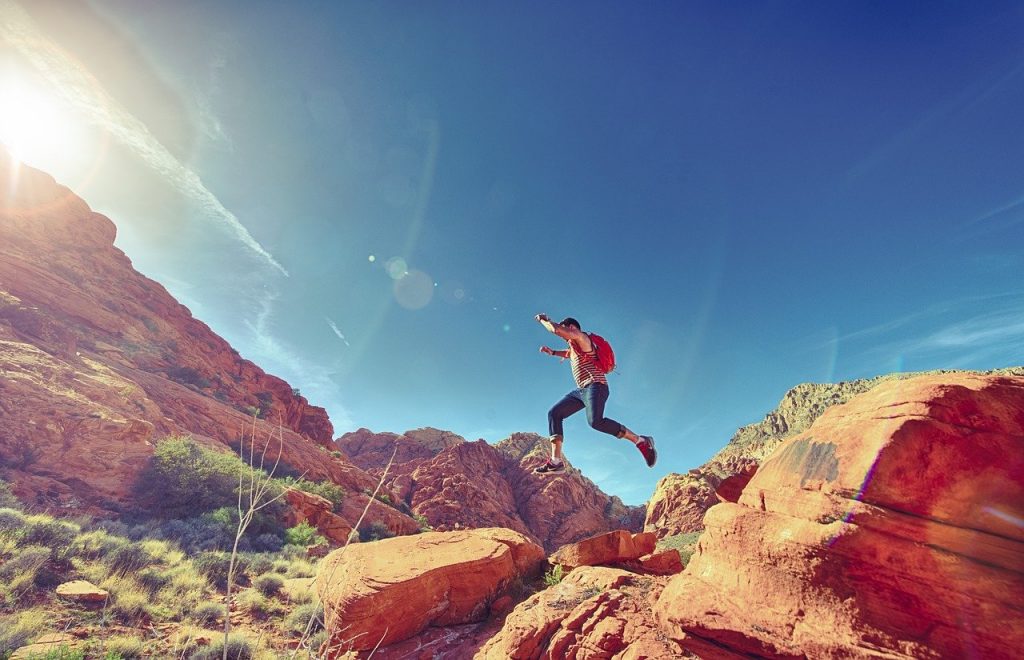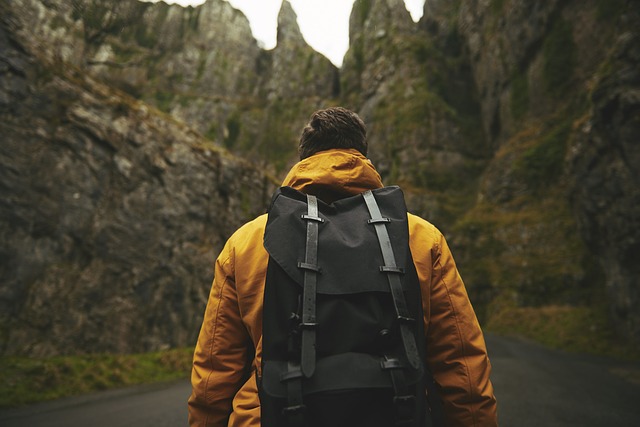It’s easy to recreate an image of a perfect hike – a dusty trail that cuts through thick forests, creeks, lush valleys and chirping birds all around you before it ascends a rocky ridgeline. And those beautiful views from the mountain summit? Beautiful, aren’t they? Well, you are not alone. Every aspiring hiker dreams of those magical moments. But while hiking is fun, it’s also a physically-demanding outdoor activity, which requires cardiovascular endurance and muscular strength. After all, how can you enjoy those scenic views when you are gasping for air or your muscles are aching? This is why it’s important to get into shape, prior to your hike. Proper training prior to the hike will help to minimize injuries, while making sure that your body can adequately cope with the challenging terrain, with a heavy pack on your back. Having said that, here are some tips that can help you to get in shape for your next hike.
Keep Walking
Walking is one of the best ways of getting in shape for a hike. Walking is a low-impact, repetitive and methodical activity, which can be done by anyone. Also, you will be basically walking during your hike. If you don’t like walking, then you can just forget about the hike. You can start by walking to work if it’s close to where you live or around your neighborhood after work. And if your workplace is far away from where you live, then you can drive halfway and then walk halfway. Instead of driving to fetch groceries, you should instead walk all the way. You can also add some weights during your walks, to increase their effectiveness. For instance, you can toss some water bottles, a laptop or even some gear inside your backpack and walk to your favorite park. You should walk at least 2 hours every day, for at least 3 months leading to your hike. Make sure you wear the right pair of walking shoes during your daily walks.
Start a Fitness Program
A physical fitness program should be part of your preparations for the hike. Starting a fitness program comes with two main benefits. First, it will improve your health, strength and overall fitness. Second, a fitness program will help you to build self-discipline. Without self-discipline, you will struggle to wake up and hit the trail, on those cold and chilly mornings. There are numerous exercises that you can include in your fitness program. These exercises include:
- Cardiovascular fitness: Cardio training should be part of your training program for the hike. It will enhance your endurance levels, helping to withstand the various challenges that you might encounter during your hike. Also, a regular cardio routine will help your body to recover faster between workouts. Cardio training doesn’t necessarily have to be hiking or walking. You can also do some swimming, jogging or cycling. The good thing about cardio training is that you don’t have to go to the gym. As long as you can find an activity that will get your heart pumping and your blood flowing to your muscles, then you are good to go. Squats, jumping jacks, leg raises, half-jacks, plank-jacks, and hops are some of the workouts that you can incorporate into your training program. If you are planning to tackle a demanding hike such as climbing Mt. Kilimanjaro, you should perhaps opt for high-intensity interval training or HIIT as it’s commonly called. High-intensity interval training will improve both your anaerobic and aerobic fitness levels while preparing your body for bursts of strength, especially when climbing a steep incline.
- Leg training: Leg training should also be part of your fitness program for your upcoming hike. After all, your legs will be doing most of the work. They will be supporting and hauling your body weight, together with everything else that you will be carrying. Calf-raises, squats, and lunges are great exercises for leg strength training. You can do them at home or at the gym, depending on your preferences. Increasing the incline of your treadmill will also force your legs to work harder, leading to more strength over time.
- Core training: Your core muscles – back muscles, abdominal muscles as well as the muscles in your pelvis – provide flexibility and balance for almost all your physical activities. Therefore, if you have a weak core, it’s highly likely you will have a hard time during your hike. For instance, you might find yourself struggling to climb hills or keeping up with your friends. Planks, crunches, and bridges are some of the most effective exercises for building a strong core.
Whether you will be hiking for a single weekend or you will spend months in the wilderness, physical conditioning is vital if you want to have a great hike. Just because you’ve been going to the gym occasionally, doesn’t mean that you can just wake up one day, slip on your hiking shoes and hit the trails. You must make sure that your body is well conditioned prior to the hike.
Prepare Your Mind
Apart from physical training, it’s also important to prepare your mind. You can be physically strong but still fill like giving up when you encounter some challenges during your hike, especially if it’s a long, solo trek. At some point during your trek, you can rest assured that you will be going to be mentally tested. You are going to face some challenging situations sore feet, hunger, fatigue, or even walking with pain. Doubt, personal issues, and fear can also derail or hinder you from completing your hike. But with adequate mental preparedness, nothing can come between you and your dream of completing the hike. To prepare your mind, you should accept the fact that there will be good times and some challenging times during the hike. With that in mind, you will find it easier to tackle the various challenges that might come your way. Before the hike, you can test your resolve by waking up early in the morning and hitting the gym, even when the conditions outside are unfavorable. If you get used to forcing yourself out of your warm bed and going outside where the conditions are chilly, it will be easy for you to make the shift from your normal routine to trail life.
Go on Mock Hikes
Even if you are in great physical and mental shape, it’s highly advisable to go for a test hike, to assess how your body can respond. As you might probably know, all hiking trails are not the same. Each hiking trail presents a unique set of opportunities and challenges. Therefore, before you embark on your hike, you should train on similar conditions. If you are planning to go on a short hike, then it might not be necessary to know the terrain, since you will only be spending a few hours on it. But if you if are going for a long trek or a thru-hike, then you will require adequate knowledge of the trail conditions. Another reason you should go on mock hikes is that they will help you to select the gear that you will need to bring during the actual hike. As noted earlier, terrain conditions are different on different terrains. For instance, if you will be hiking on hilly or rocky areas, then you need to choose hiking shoes that have adequate traction. And if you will be hiking in wet conditions, then you need to bring waterproof hiking boots, to ensure your feet remain dry and comfy during the trek. Prior knowledge of the trail and the terrain conditions will significantly enhance your chances of completing the trek successfully.
Learn How to Use Your Gear
After preparing yourself mentally and physically, it’s also a good idea to learn how to use the gear that you intend to use during the hike. All your preparation might go to waste if your gear fails to work as it should. For instance, if you are planning to use a camping tent, then you should try to set it up a few times before the actual day of the hike. With time, you will eventually learn how to set it up within the shortest time possible. On the other hand, if you don’t know how to set it up, you will end up spending a longer time than you had intended. As a result, you might end up working in the dark, which is not only dangerous but it will leave you with unnecessary stress. Also, learning how to use your hiking gear prior to the hike will help you spot any technical issues. For instance, your camping cot might be missing some rails, thus rendering it unusable. By learning how to use your gear and making sure that everything is in great working condition, you will have the confidence of leaving your home and hitting the trails, knowing that your hike will go as planned.
Be Patient
As you prepare and train for your upcoming hike, you need to be patient. Whether you are doing squats in the gym or walking, don’t overdo anything. Trying to accomplish all your goals within a few days might lead to overuse injuries. And if the injuries are serious, you might end up missing the hike altogether. Increase the training intensity gradually, and if you experience any pain or discomfort, you need to ease off for a few days. If the pain doesn’t seem to go away, then you should consult a physician right away. If you are methodical and patient during your training and preparation, you can avoid some serious issues that have sidelined even some of the most experienced hikers for long periods.
Closing Remarks
While hiking can be beneficial to your health and improve your overall well-being, it’s also quite demanding, both physically and mentally. Therefore, whether you are planning a thru-hike, a day trek or just a weekend of fun with your friends on a local trail, some mental and physical training will go a long way towards improving your stability, strength, and endurance. By utilizing the tips provided here, your hike should be a successful one, filled with great memories. Good luck and happy hiking!




0 comments